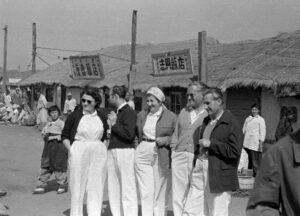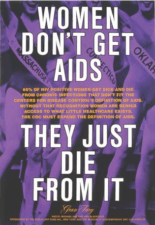Not long after the Korean War broke out in early 1950, calls for expressing socialist solidarity with North Korea appeared throughout the Second World. Hungary, a small country where Communists got into power only two years prior, proved to be among the first ones from the emerging Eastern bloc to send a medical assistance team, which included five women.[1] The Hungarian assistance lasted from July 1950 until the summer of 1957, at various locations, with the participation of over 200 medical professionals. While women remained in the minority, they participated in each of the eight cohorts and some of them – both doctors and nurses (nurses also acted as operating room assistants) – spent more than one cycle working in North Korea.
A handful of narrative reports remained that discuss the working conditions and everyday life of the health care personnel in detail. Mrs. Dr. György Karádi as head nurse (1950) and Ilona Kormos as nurse (1953–1954) participated in one group, while Mária Nagy, another nurse spent two cycles in North Korea, with four years in between (1952 and 1956). Her two accounts are unique, therefore, in that they both capture the wartime conditions and the rapid development of the immediate postwar years.[2]
In her first account, Nagy introduced the war hospital’s structure, the division of labor within the Hungarian group and in collaboration with the North Korean colleagues.[3] She emphasized the aspect of training in their work:
Three Hungarian OR assistants have trained a whole series of OR assistants in nine months. There are some very special talents, Comrades Kim and Han Gae-sun.[4] They already assist [with operations – R.K.] excellently and run the operating theatre with the utmost conscientiousness on the Korean side.
In terms of the profile of the war hospital, most of the procedures were surgical reconstructions, but clinical surgery remained also important, and to provide care to the constant flow of the freshly wounded. However, the personnel of the hospital had initially a conflict with the locals, because of the North Korean administration’s insistence on not giving out medicine to the civil population. This conflict was later resolved by the permission of the authorities. Some members of the Hungarian group were also involved in public health education activities, which provided another way to connect with the locals.
Nagy’s first account reached its peak when she described the events of a single tumultuous night that followed an entire day of American bombing:
…but the most horrific of all was the terrorist attack on the capital on 12 June. For 24 hours, bombs were continuously fired… Children, adults, women, men, and patients with severe head injuries, disfigured bodies were put on the operating table. Everybody has their job to do, giving blood, taking blood, bathing patients. By 10 o’clock the next morning, 88 operated patients are lying in the emergency wards, which are quickly furnished. On this unforgettable night, no one was tired, no one thought of being thirsty or tired, only that they [the patients – R.K.] needed help.
After experiencing the constant state of emergency during her first stay, Mária Nagy returned in 1956 to a spacious, well-equipped hospital in Sariwon, which became the last site of Hungarian aid and was named after the Hungarian first secretary, Mátyás Rákosi. Nagy’s brief notes of the trip to the site indicate that postwar reconstruction was proceeding at a rapid pace and that the contrast with her earlier memories was indeed great. It was not only the infrastructure that suggested a consolidation, but also the way in which daily work in the hospital was managed. While many senior nurses remained Hungarian, they always worked with Korean nurses and nursing assistants, many of whom had already been trained by their Hungarian colleagues.
During her second rotation, Nagy began working in the stomatology, dental, and ENT operating rooms, but when the head nurse left, her responsibilities expanded as she assumed the role of head nurse and several related duties. This included a leadership role in the continuing education of nurses, along with Hungarian and Korean physicians, and she was also the housekeeper for the Hungarian group, making sure its members had clean clothes and tidy living quarters. She enjoyed this new role, especially the educational tasks, and praised the nurses in training even more than in her first report:
They were very hard-working, they studied with diligence, so that out of 40-50 students, there were barely three who dropped out at the end of the year exam. They loved the Hungarians very much and they also loved the doctor who taught them. Once, when he was indisposed and could not come down, the little nurses cried. [5]
Nagy also alluded to the fact that she rarely needed to be translated because she knew how to make herself understood in Korean. Both after her first and second term, Nagy parted from North Korea and the remaining colleagues with a heavy heart.
Mária Nagy’s memoirs, penned down in the 1980s, and those of other nurses tell a story of extreme scarcity (especially during the war), socialist solidarity, and collaboration through the eyes of women from state-socialist Hungary. Beyond the sometimes opaque language of official solidarity, the realities of medical care, and the often gendered, affective bonds that were formed converge in a meta-narrative.
This blogpost was supported by the DFG Walter Benjamin Postdoctoral Grant.
Réka Krizmanics is an Akademische Rätin/Assistant Professor and recipient of the DFG Walter Benjamin Postdoctoral Grant at Bielefeld University. She holds a PhD in Comparative History from the Central European University. She is interested in the history of state socialist Eastern Europe’s global interconnectedness from the perspective of women and the intellectual history of the region.
Image credit: The group of Hungarian doctors at the market (Sariwon, 1955). Fortepan/Lőrinczi Ákos.
[1] For a more detailed discussion of the circumstances of this assistance program see: Mózes Csoma, Rákosi Mátyás kórház, Észak-Korea: magyar orvoscsoportok a Koreai-félszigeten, 1950–1957 [Rákosi Mátyás Hospital, North Korea: Hungarian Physician Groups on the Korean Peninsula, 1950–1957] (Budapest: Ludovika Egyetem Kiadó, 2021).
[2] The analysed sources are available in the Military History Institute and Museum in Budapest. Mária Nagy, “Élménybeszámoló 9 Hónapos Koreai Tartózkodásomról [An Account of My Experiences during My 9-Month Stay in Korea]” (Budapest, n.d.), HM HIM MN Kgy: C-223.
[3] Dora Vargha, “Technical Assistance and Socialist International Health: Hungary, the WHO and the Korean War,” History and Technology 36, no. 3–4 (October 1, 2020): 400–417.
[4] Based on the Hungarian records, this transliteration seems to be the most likely. I would like to thank Gábor Osváth for his help.
[5] Kisnővér or ‘little nurse’ is the term that was in use for Hungarian nurses-in-training.


